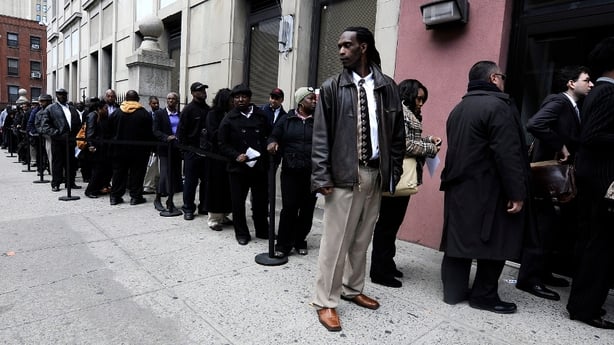US jobs growth surged in October after two months of tepid gains in a row.
The US unemployment rate also hit a seven and a half year low in a show of domestic strength that makes it almost likely the Federal Reserve will hike interest rates in December.
US non-farm payrolls increased 271,000 last month, the largest rise since December 2014, the Labor Department said today.
In addition, average hourly earnings increased by nine cents last month. The solid gains added to robust car sales in painting an upbeat picture of the economy at the start of the fourth quarter.
The US unemployment rate fell to 5%, the lowest level since April 2008, from 5.1% in September. The jobless rate is now at a level many Fed officials see as consistent with full employment.
Payrolls data for August and September were revised to show 12,000 more jobs created than previously reported
With speeches from several Fed officials, including Chair Janet Yellen, suggesting a low bar for a December rate increase, economists say monthly job gains above 150,000 in October and November would be sufficient for the Fed bank to lift benchmark overnight borrowing costs from near zero.
Minutes from the Fed's October 27-28 meeting and subsequent comments from Yellen have firmly put a rate hike on the table at the bank's December 15-16 policy meeting.
Economists polled by Reuters had forecast non-farm payrolls increasing 180,000 last month and the unemployment rate unchanged at 5.1%.

Today's employment report joined October's strong services sector and car sales data in supporting views that economic growth will regain momentum in the fourth quarter after braking sharply to a 1.5% annual pace in the three months from July to September.
Last month's rise in wages, which have been almost stagnant despite a tightening labour market, lifted the year-on-year reading to 2.5%.
That was the biggest increase since July 2009 and could give Fed officials confidence that inflation will gradually move towards their 2% target.
There were also improvements in other labour market measures that Fed officials are eyeing as they contemplate raising rates for the first time since 2006.
A broad measure of joblessness that includes people who want to work but have given up searching and those working part-time because they cannot find full-time employment fell two-tenths of a percentage point to 9.8%, the lowest level since May 2008.
But the labour force participation rate, or the share of working-age Americans who are employed or at least looking for a job, held at a near 38-year low of 62.4%.
US employment gains in October were broad-based, though manufacturing added no jobs and mining shed 4,000 positions.
Manufacturing has been hit by a strong dollar, efforts by businesses to reduce bloated inventory and spending cuts by energy companies cutting back on well drilling and exploration in response to lower oil prices.
Mining employment has declined by 109,000 since peaking in December 2014. Oilfield services provider Schlumberger last month announced further layoffs in addition to the 20,000 jobs it has already eliminated.
Construction payrolls, however, increased 31,000 last month, the biggest gain since February.
The services sector added 241,000 jobs last month, with large gains in retail, health and leisure. Government payrolls increased 3,000 last month.

